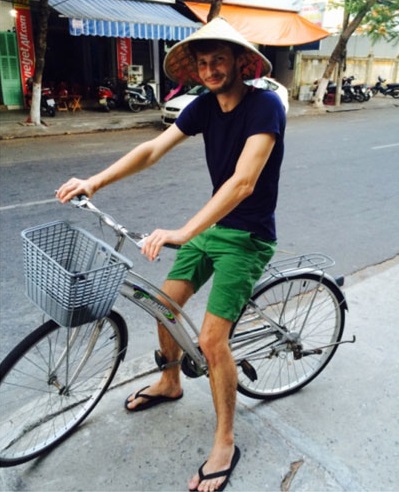Ex-pats eager to celebrate New Year in city
Like the traditional Tet festival for Vietnamese people, the New Year holiday is the biggest and most popular festival of the year for foreigners worldwide. Ex-pats who are living and working in Da Nang are eager to celebrate the New Year in the city.
Mr James Lutley from England, a web designer, is a typical example. He first came to Viet Nam 5 years ago during a trip around Southeast Asia. Now he has a Vietnamese wife and they live in a house on Pham Van Dong which he designed himself.
 |
| Mr Stefan Wroclawski |
The British man said that he was deeply impressed by the friendliness and hospitality of local people. He remarked that, unlike Ho Chi Minh City, he can stop his motorbike on the roadside anytime in Da Nang to answer his phone without fear of having his phone snatched.
For his New Year celebrations, Mr Lutley said that he and his wife have decided to go out to watch the spectacular fireworks display on the beach and enjoy some musical performances to welcome in the New Year instead of staying at home as in previous years. His decision was made after he read an article published on Danang Today about the various cultural events which are being organised to welcome in 2016.
Mr Stefan Wroclawski from Poland said that on New Year’s Eve Polish people usually either hold New Year parties at home or go for a walk and enjoy street music performances. Younger Polish people might prefer to visit bars or discotheques to welcome in the New Year. He added that he would invite some of his friends to his rented house in Son Tra District to celebrate the New Year.
Ms Mai Kobayashi from Japan is a PhD student and she has lived in Da Nang for just over 2 months. Amongst the local specialities, Quang noodles and nem lui (grilled meat roll) are her favourite Vietnamese dishes.
The 24-year-old student said that on New Year’s Eve, Japanese family members gather together to watch TV and celebrate the festival. At midnight, they extend best wishes to each other for the New Year. Then, Japanese people often put on kimonos, the Japanese traditional costume, to visit temples to pray for good luck in the new year.
 |
| Ms Mai Kobayashi |
Ms Kobayashi said that she was very eager to enjoy the fireworks display on the beach with her friends to welcome in the New Year because there are no such displays to welcome in the New Year in her country.